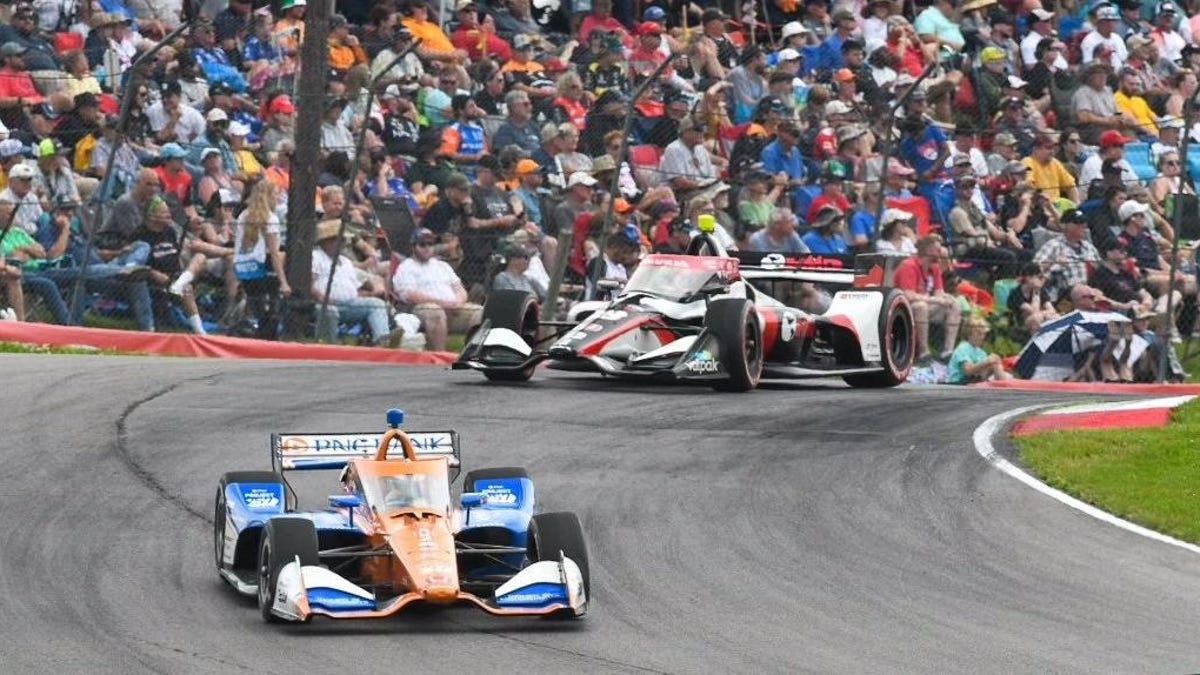IndyCar has been threatening to introduce a simple hybrid energy system to its race cars for the better part of a decade. The series finally had a plan in place to implement such a change for the start of the 2022 season, which it announced in late 2019. Then COVID happened and the electrified DW-12 chassis was pushed back. This week the series announced that it will finally actually really be pushing hybrid drive live in the middle of the current season. This spec system, jointly developed between Honda and Chevrolet, will make its bow at the Mid-Ohio round of the season on July 7. Here’s what you need to know about it.
Some Fans Hate It
There has been major online backlash regarding the hybrid system from the sport’s most vocal (and ignorant) fans. IndyCar has been hit with the same “Go Woke Go Broke” nonsense all year from all the folks who remember how things yoostabee. Some are complaining that it was the hybrid system that ruined Formula One, noting stark dominance by Mercedes and then Red Bull, disregarding all of the other myriad reasons F1 is uncompetitive right now.
The dorks who still associate the word “hybrid” with a 1999 Toyota Prius need to wake up and move on. In the modern era of the racing, some of the most exciting racing on the planet is happening with a hybrid rules package. Every Le Mans winning car has been hybrid since 2012. IMSA’s hybrid GTP class is providing some of the best racing around right now. Grow up.
The Tech Is Pretty Cool
IndyCar has been using the same Dallara DW-12 chassis since 2012 largely unchanged. In order to keep budgets in check, the series had to develop a hybrid system that would work with the existing chassis and fit within the current bodywork. The engineers also had to work to keep the weight and power output of the system relatively low to avoid expensive re-engineering of the suspension.
As a result the new motor generator unit will fit within the car’s transmission bellhousing, regardless of Honda or Chevrolet power. This little electric motor will both harvest and deploy the extra energy through the rear wheels. The whole system weighs just around 120 pounds, thanks to the use of 48 volt ultracapacitors instead of batteries. Capacitors charge and discharge much quicker than traditional batteries, making it ideal for this application.
For now the little motor will provide the IndyCar drivers an extra 60 horsepower boost on application by the driver. When the MGU power is applied at the same time as the existing push-to-pass 50 horsepower overboost function, these IndyCars will be putting down over 850 horsepower for the first time in over twenty years. Once the series has had an opportunity to monitor how this affects the racing, the power output could be pushed up over 100 horsepower. If IndyCar chooses to do that, we could see 900-horsepower race cars at the Indianapolis 500!
How It Drives
Well, while there have been a few tests implemented by IndyCar regarding the new hybrid system since last fall, we don’t yet know much about how it drives. We can assume that the drivers will be moving their braking bias further forward as energy recovery does a bit at the rear end. We’ll probably see a few more spins or lockups than usual thanks to this fact. With a bit extra power, there’s probably going to be some more power on oversteerThe drivers are keeping pretty mum about their experience.
Thankfully Honda built a totally wild CR-V with the 2024 IndyCar hybrid powertrain in the back. You can see a bit more about how it delivers the power and what the system looks like in this video below.
Unlike the existing push-to-pass function that IndyCar only allows drivers to use a certain number of seconds per race, the hybrid boost won’t have a limit. Even if a driver runs out of P2P presses, they can still hit the hybrid button every lap, whether playing offense or defense. There will, however, be a limit to how much power can be harvested and deployed each lap. This is largely an effect of the use of capacitors over batteries, but it is also the ability for the series to keep the racing competitive.
One thing I really like about this system is the fact that it gives the drivers an extra tool to put down a fast lap. Anything that a driver could mess up or forget about or misuse is going to make for better racing.
And in case you were worried, the sound of the 2.2-liter V6 engines hasn’t been diminished one iota. There might be a little extra hybrid whine undertone that you can pick up every now and again, but for the most part, it’ll sound just like the IndyCars you know and love.
I, for one, am looking forward to the new era of hybrid IndyCar racing. I’m hopeful that the move will entice some more manufacturers aboard the series. Maybe Porsche will come back? I think it’ll be good. I’m heading to Mid-Ohio for the first race, so I’ll let you know what it’s like trackside in July.
